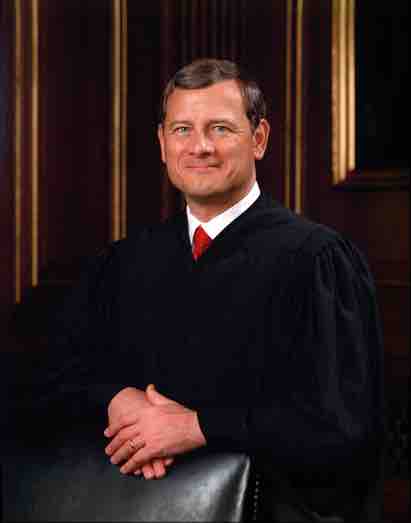Checks and Balances
One of the theoretical pillars of the United States Constitution is the idea of checks and balances among the powers of the executive, legislative and judiciary branches. For example, while the legislative (Congress) has the power to create law, the executive (president) can veto any legislation; an act that can be overridden by Congress. The president nominates judges to the nation's highest judiciary authority (Supreme Court), but Congress must approve those nominees. The Supreme Court, meanwhile, has the power to invalidate as unconstitutional any law passed by the Congress. Thus, the nomination and appointment process of federal judges serves as an important component of the checks and balances process.
The Appointment Clause of the Constitution
The president has the power to nominate candidates for Supreme Court and other federal judge positions based on the Appointments Clause of the United States Constitution. This clause empowers the president to appoint certain public officials with the "advice and consent" of the U.S. Senate. Acts of Congress have established 13 courts of appeals (also called "circuit courts") with appellate jurisdiction over different regions of the country. Every judge appointed to the court may be categorized as a federal judge with approval from the Senate.
The Nomination Process
The president nominates all federal judges, who must then be approved by the Senate . The appointment of judges to lower federal courts is important because almost all federal cases end there. Through lower federal judicial appointments, a president "has the opportunity to influence the course of national affairs for a quarter of a century after he leaves office." Once in office, federal judges can be removed only by impeachment and conviction. Judges may time their departures so that their replacements are appointed by a president who shares their views. For example, Supreme Court Justice Souter retired in 2009 and Justice Stevens in 2010, enabling President Obama to nominate - and the Democratic controlled Senate to confirm - their successors. A recess appointment is the appointment, by the President of the United States, of a senior federal official while the U.S. Senate is in recess. To remain in effect a recess appointment must be approved by the Senate by the end of the next session of Congress, or the position becomes vacant again; in current practice this means that a recess appointment must be approved by roughly the end of the next calendar year.

Chief Justice Roberts
John G. Roberts, Jr., Chief Justice of the United States of America. Federal judges, such as Supreme Court Justices, must be nominated.
Choosing Supreme Court Justices
In nominating Supreme Court justices, presidents seek to satisfy their political, policy and personal goals. They do not always succeed, as justices sometimes change their views over time or may surprise the president from the start. The following are some other factors that can influence a president's choice of Supreme Court nominee:
- Senate composition: Whether the president's party has a majority or a minority in the Senate is a factor. In 1990, when the Democrats had a majority, Republican President George H. W. Bush nominated the judicially experienced and reputedly ideologically moderate David H. Souter, who was easily approved.
- Timing: The closer to an upcoming presidential election the appointment occurs, the more necessary it is to appoint a highly qualified, noncontroversial figure acceptable to the Senate. Otherwise, senators have an incentive to stall until after the election.
- Public approval of the president: The higher the president's approval ratings, the more nominating leeway the president possesses. However, even presidents riding a wave of popularity can fail to get their nominees past the Senate, as was the case with Richard Nixon and his failed nominations of Clement Haynesworth and G. Harrold Carswell in 1970. So lacking were Carswell's qualifications that a senator defended him saying, "Even if he were mediocre, there are a lot of mediocre judges and people and lawyers. They are entitled to a little representation…and a little chance."
- Interest groups: Nominees must be acceptable to interest groups that support the president. They also must be invulnerable to being depicted in ways that would significantly reduce their chances of Senate approval.
Nominations go to the Senate Judiciary Committee, which usually holds hearings. Whether senators should concern themselves with anything more than the nominee's professional qualifications is often debated. Arguably, "nothing in the Constitution, historical experience, political practice, ethical norms, or statutory enactments prohibits senators from asking questions that reveal judicial nominees' views on political and ideological issues." The next step for the Judiciary Committee is to vote on whether or not to send the nomination to the Senate floor. If it reaches the floor, senators then can vote to confirm or reject the nomination, or filibuster so that a vote is delayed or does not take place. Fewer than half of recent nominees to the federal appeals courts have been confirmed.